Local people refer to it as Api Biru (Blue Fire), and the mountain really comes up to its name: the blue flames that burn in its crater can be up to five meters (16 feet) high.
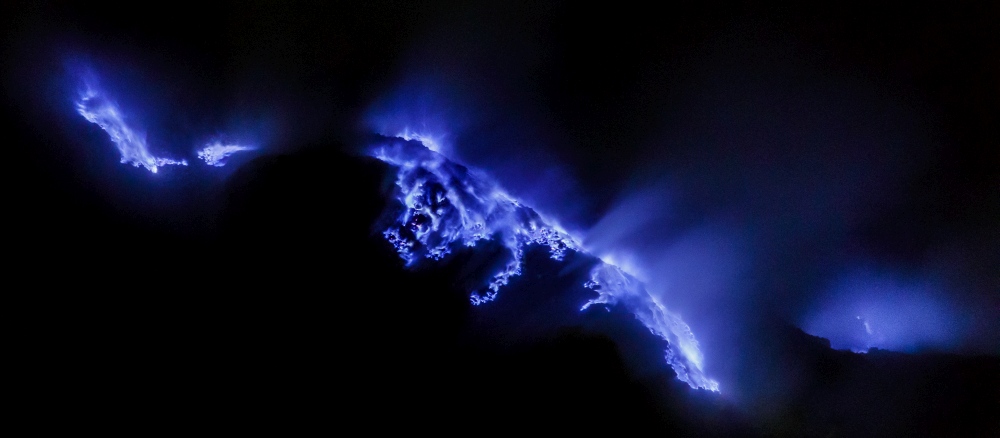
The blue fire of Mt. Ijen. Photo: Thomas Fuhrmann
But it’s not only flames… Sometimes Indonesia’s Kawah Ijen volcano emits blue ‘lava’ too. Wait, blue lava? Yupp, since the mountain has extreme amounts of sulfuric gases that can reach temperatures of more than 1,000 degrees Fahrenheit and combust as they seep through the cracks and come in contact with air. The gases sometimes condense into liquid sulfur, which then takes on an otherearthly shade of blue, flowing down the volcano like lava.
The process results in this unbelievable landscape:
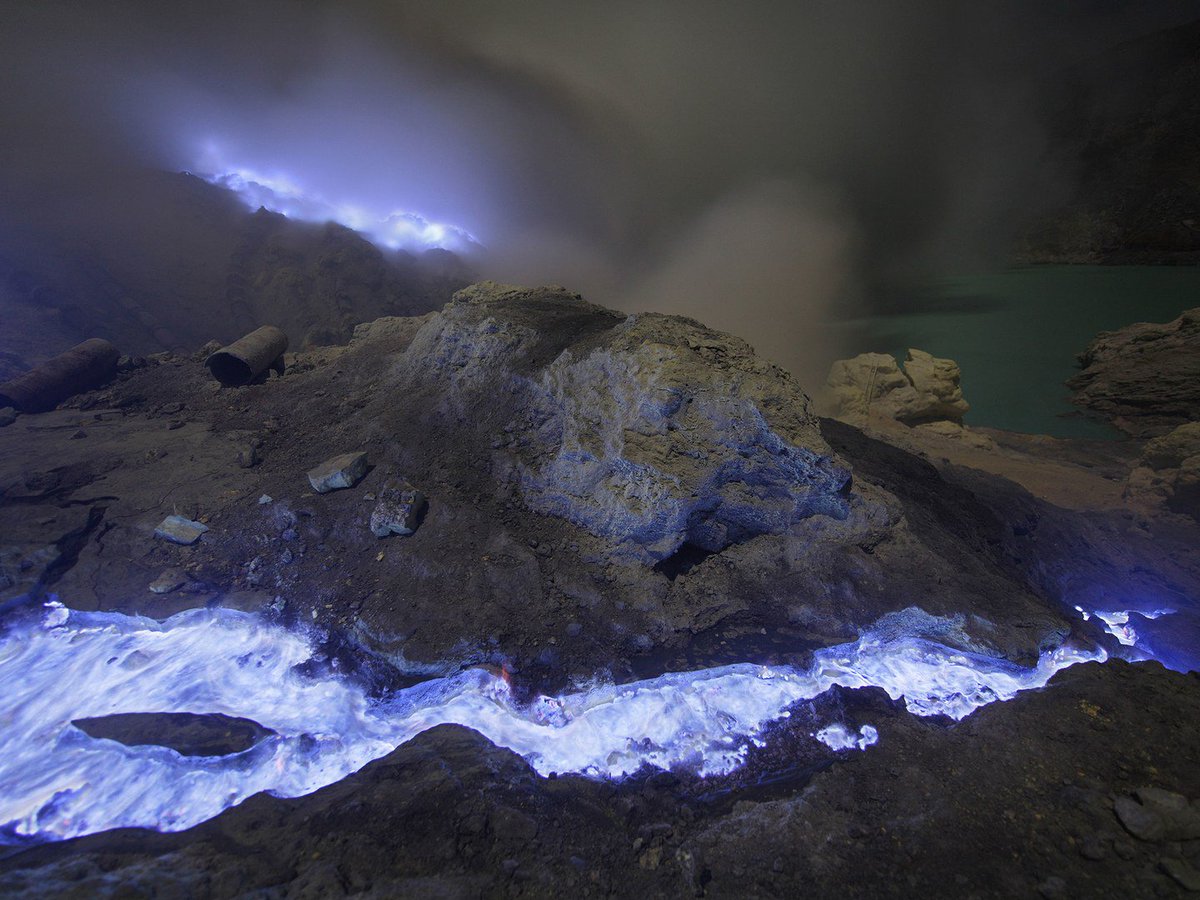
Source
Here’s what the place looks like during daytime. As you can see, there’s a major sulfur mining operation going on here. But in reality, it’s nothing more than a bunch of poor miners risking their lives to be able to sustain themselves and their families. (Click image to enlarge)
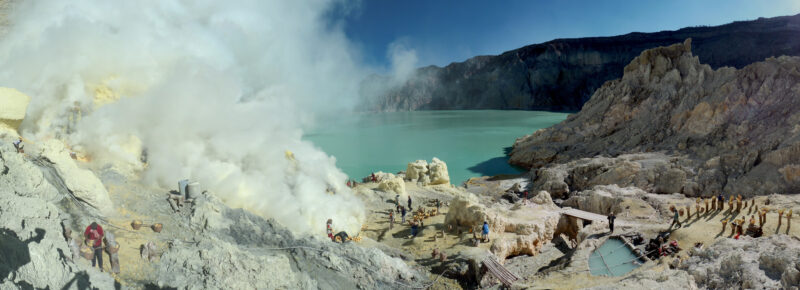
The mining operation is supported by an active vent at the edge of the crater lake which is a source of elemental sulfur. The escaping volcanic gases are channeled through a network of ceramic pipes, resulting in condensation of molten sulfur.
When molten, sulfur has a deep red colour, which eventually turns bright yellow as it cools after pouring slowly onto the ground from these ends of the pipes and pools. Local miners then break the material into large pieces and carry it away in baskets. The pooor guys carry loads ranging from 75 to 90 kilograms (165 to 198 lb), up 300 metres (980 ft) to the crater rim, at a gradient of 45 to 60 degrees. Then, they have to walk another 3 kilometres (1.9 mi) down the mountain for weighing. Most miners make the journey twice a day.
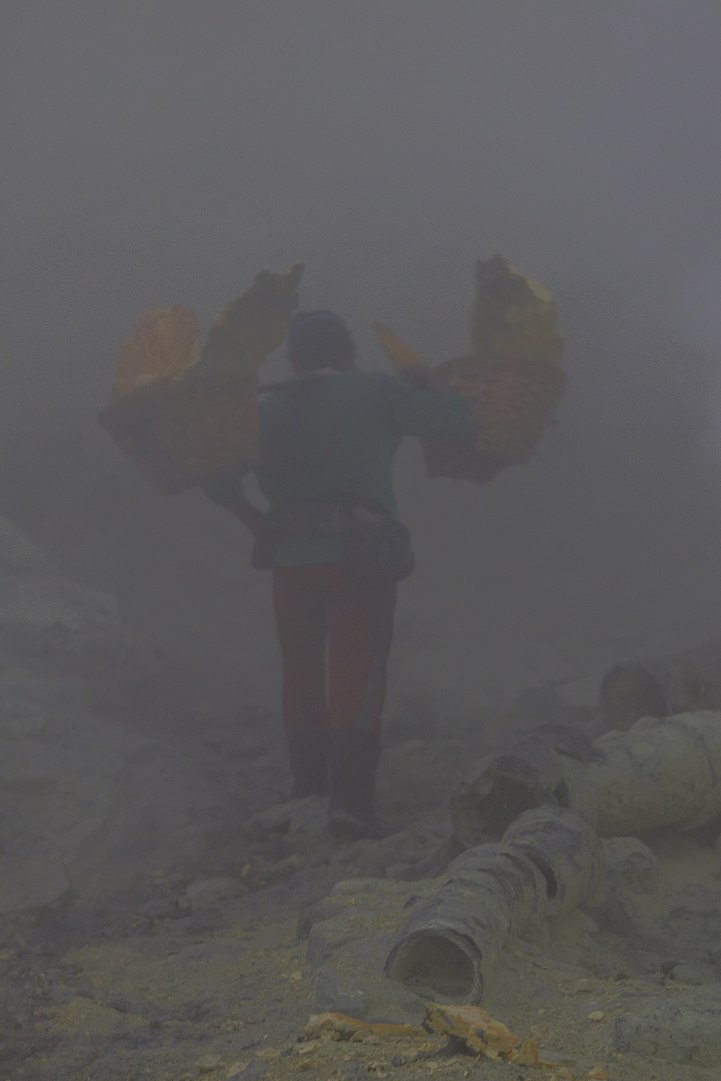
Mining sulfur on Mount Ijen is a tough job. Photo: Thomas Fuhrmann
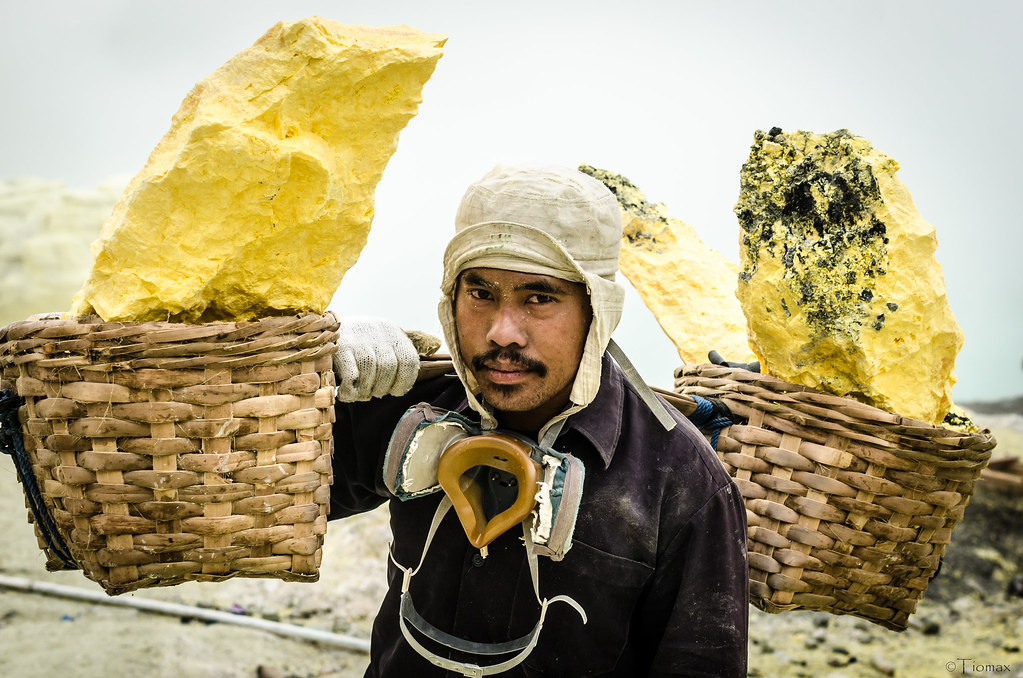 Kawah Ijen miner. Photo: Tiomax80
Kawah Ijen miner. Photo: Tiomax80
Miners are paid by a nearby sulfur refinery after the weight of sulfur transported. The typical daily earnings were equivalent to approximately $13 US. They have insufficient protection while working on volcano, resulting in numerous respiratory problems. The appoximately 200 miners who work on the mountain extract 14 tons of sulfur per day – about 20% of the continuous daily deposit.
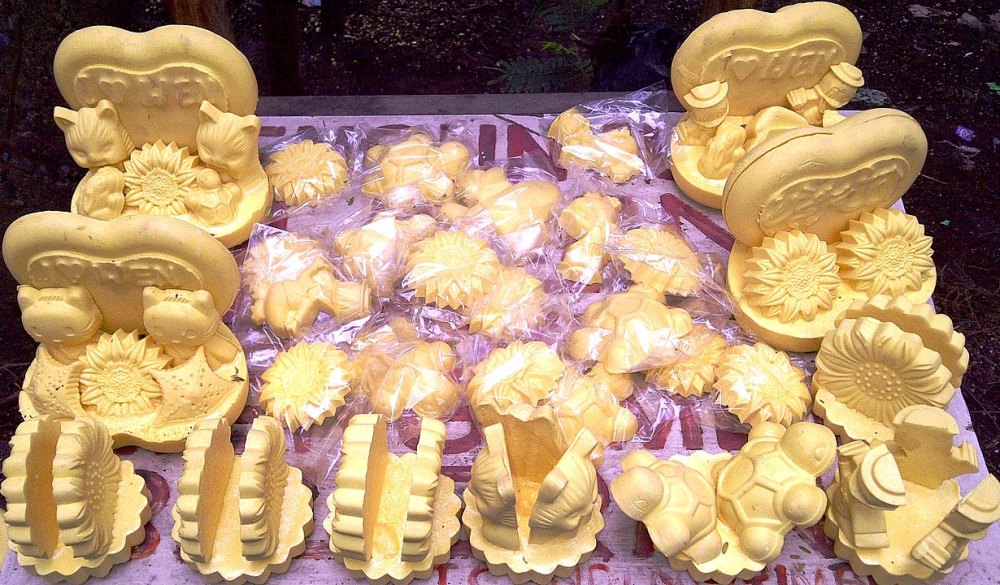
Ornaments made of sulfur coming from the Ijen mines. Photo: Okkisafire
Since National Geographic reported on the electric-blue flame of Ijen, tourist numbers have increased. Although the phenomenon has occurred for a long time, midnight hiking has only been introduced a short while ago. It takes about a two-hour hike to reach the rim of the crater, followed by a 45-minute hike down to the edge of the crater.
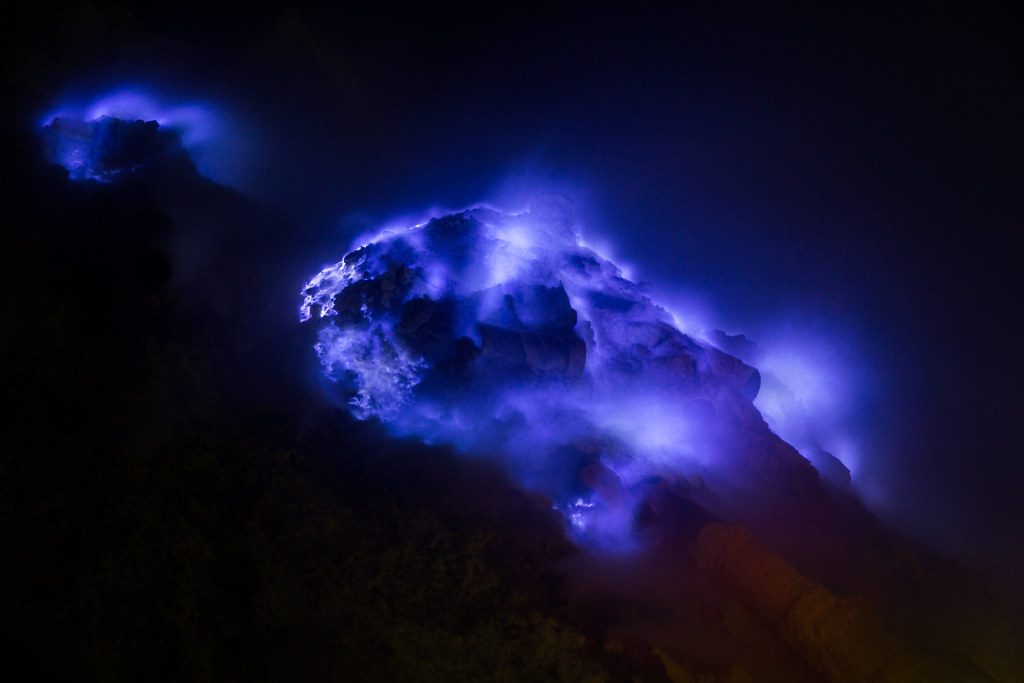
Blue fire at Kawah Ijen. Photo: Ti Yab

